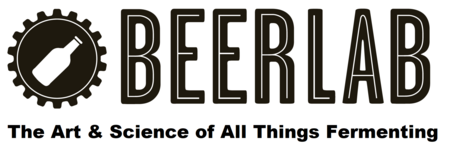When can I bottle?
After your beer has fermented for two weeks and your final gravity is stable its time to bottle. Beer can be carbonated by using a convenience product like carbonation drops (Coopers) or sugars like dry malt extract, dextrose or normal granulated sugar (sucrose).
What is priming solution?
This is simply a mixture of sugar boiled with water for 10 minutes and then cooled. The sugar syrup is then added to the fermenter before bottling.
How many carbonation drops do I need?
A problem regularly encountered by brewers who use carbonation drops is that they are made for specific bottle sizes (375 ml and 750 ml). The 375 ml variety is uncommon in South Africa so most brewers with 330 ml, 440 ml and 500 ml bottles have a dilemma. Instead of trying to crush the drops you can work out how many drops you need for your entire batch of beer and dissolve them in 500 ml of boiling water. The solution should then be boiled for 10 minutes (to sanitze it) and cooled to room temperature (keep the lid on your boiling pot while cooling). The syrup is then added to your fermenter and you are ready to bottle (you can give your fermenter a few nudges to incorporate the solution or use a sanitized spoon to mix in). Now all bottles will all be equally carbonated irrespective of the bottle size.
How much sugar should I use if I want to use a priming solution?
You need to know how many liters of beer you will be bottling and the amount of carbonation you want in the beer. Different beers styles range in carbonation levels and this is measured in volumes of carbon dioxide.Here is a list of typical volumes of CO2 for various beer styles:
|
British ales |
1.5-2.0 |
|
Porter, Stout |
1.7-2.3 |
|
Belgian ales |
1.9-2.4 |
|
American ales |
2.2-2.7 |
|
European lagers |
2.2-2.7 |
|
Belgian Lambic |
2.4-2.8 |
|
American wheat |
2.7-3.3 |
|
German wheat |
3.3-4.5 |
Some sources recommend simply pouring 1 teaspoon of sugar directly to the bottle for priming. This method can be messy, time consuming and can cause bottles to carbonate unevenly (even exploding due to inadequate measuring). This method of priming could also potentially infect your beer since the sugar has not been boiled.
A general priming solution can be made from ¾ of a cup of household granulated sugar (white Hullets for example) or 1 and a ¼ cup of dry malt boiled in 500 ml of water for 10 minutes. The mixture is then cooled (keep the lid on to avoid contamination) and poured directly into the fermenter.
A bottling bucket can also be used (my favourite method). Instead of pouring the sugar solution directly into the primary fermenter the priming solution is poured into a sanitized bucket and the beer from the primary fermenter is slowly transferred on top of the sugar solution into the bottling bucket before bottling.
This advantage to this method is that the priming solution does not need to be stirred into the fermenter to make sure it is properly mixed in (this usually rouses the yeast at the bottom of the primary fermenter) but more importantly you will have less sediment going into your bottles while you bottle since the yeast is left behind in the primary fermenter.
Here are the basics steps to follow when making a priming solution

If you however want to get the Carbonation level just right for your style of beer you will need to use a priming sugar calculator or nomograph (found in John Palmers book - How to Brew) to work out exactly how much sugar to use to carbonate your beer with.
These priming sugar calculators are very easy to use and calculate the amount of sugar you need
http://www.brewblogger.net/?page=tools§ion=sugar
http://kotmf.com/beer/2012/priming-sugar-calculator/
